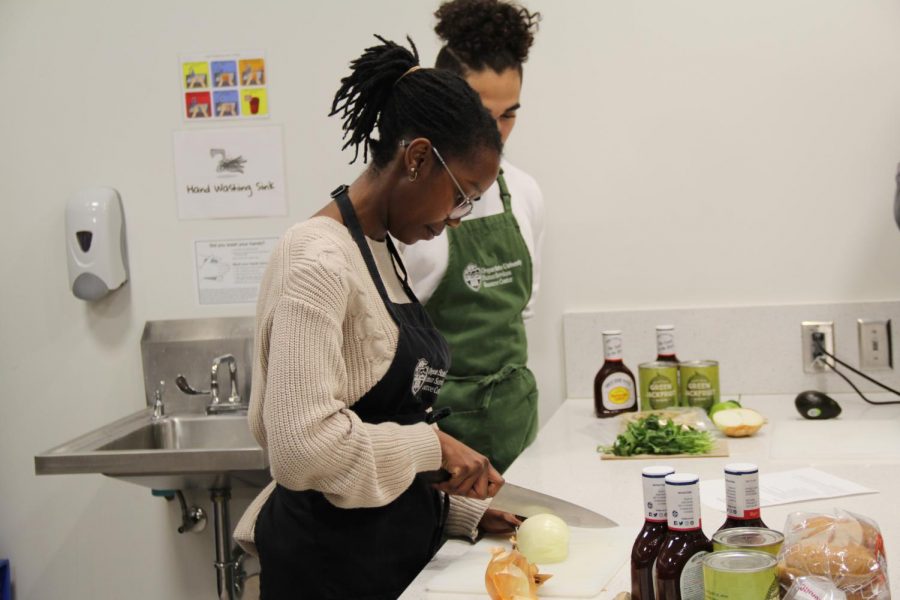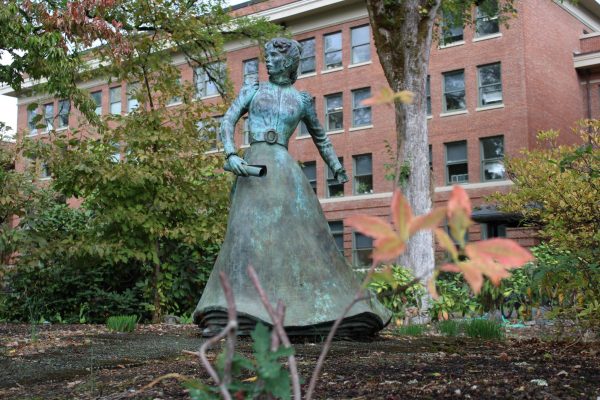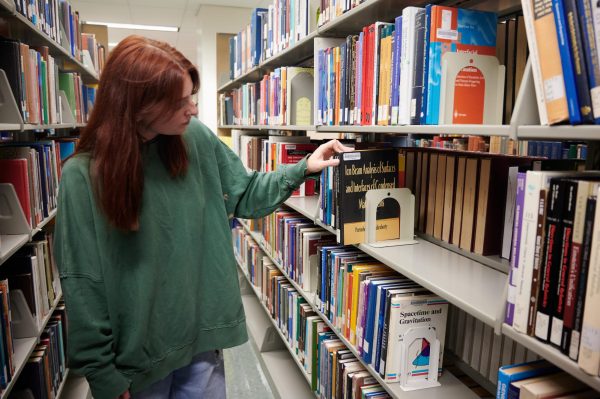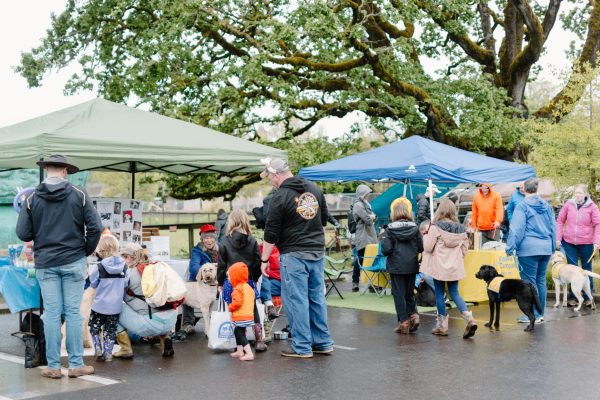Students in the Kitchen
December 4, 2019
Are you growing tired of the same old dining hall food? Have you been wanting to branch out and try making your own food, but you don’t know where to start?
The new cooking classes put on by the Human Services Resource Center might be perfect for you. These classes are free and open to all students at Oregon State University.
“Food is an art that is meant to be destroyed.”
This statement, made by Emily Faltesek, the Food Security Program Coordinator of the HSRC offers an interesting insight about the philosophical viewpoint of food being portrayed as both beautiful and sacrificial.
The art refers to the cooking process, in which raw ingredients can be combined to form an exquisite masterpiece in various ways that are open to experimentation and creative thought. The outcome of the hard work and effort is a nourishing reward to be consumed for the body to acquire energy and nutrients.
As college students, we experience personal growth and the transition to adulthood. The journey to becoming independent encompasses cooking, an essential skill that provides basic needs and requires patience, creativity, and willingness to learn. As much as it may be a challenge, we are not alone. We have peers among us who are also struggling, but uniting together can foster collaboration and encouragement.
HSRC offers such a safe and supportive cooking environment for fun and efficient learning. First of all, Faltesek describes the objective of HSRC.
“The purpose is to help connect students with meeting their basic needs through sharing resources in a number of different categories.” says Faltesek.
Not only does HSRC lower financial burdens by providing resources, but they also offer a few cooking classes, available every term at the Champinefu Lodge kitchen that are free and open to all students.
According to Gloria Angima, the Nutrition Education Coordinator of HSRC and also a fourth year student studying Food Science, the way the cooking classes are designed take into consideration the varied expectations of students; recipes incorporate skill building, cooking basics, dietary restrictions, and seasonal themes.
For instance, this term, the spring roll recipe taught students veggie prep basics and vegetarian alternatives while the turkey breast recipe allotted for festivity and skill improvement. In addition, Angima reveals a more general trend that goes towards planning the cooking classes.
“We try to find recipes that are really quick and easy and convenient for students,” Angima says.
Thus, benefits extend beyond the cooking classes; the simplicity and productivity of the recipes allows students to be able to replicate it for practical uses in their own homes.
Emily Carrico, a diabetic intern at OSU, expressed how impressive these classes are, stating that a great deal of time and effort goes into making these courses easy, accessible, and very student-friendly.
“It’s a really great community builder, and for just 2 hours a week it lets people forget about their stresses, fill their stomachs, and learn some new things,” Carrico said.
Overall, the benefits associated with cooking include saving money, eating healthier, improving skills, and having fun. Learning how to cook doesn’t have to be troublesome when there are instructors to guide you and peers to work with.
Stay up-to-date with HSRC cooking classes on their social media and sign up through their website! Learning how to cook could potentially save you when trying to make a good impression on a date or when you’re desperately scavenging for food in the middle of the night.



















